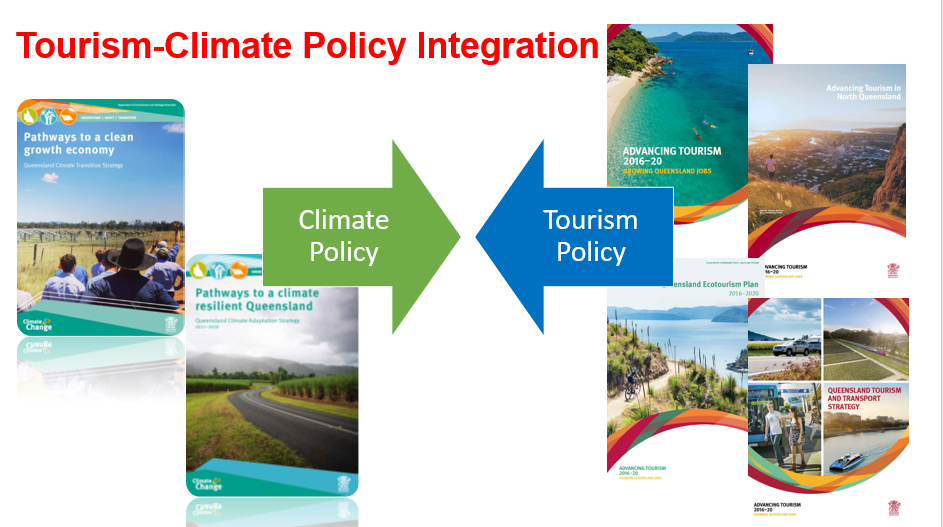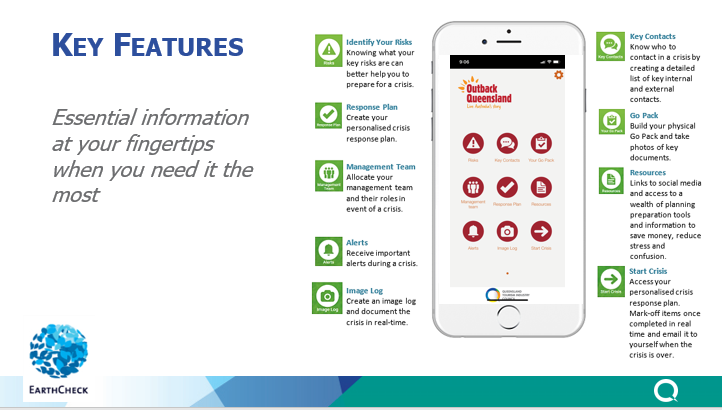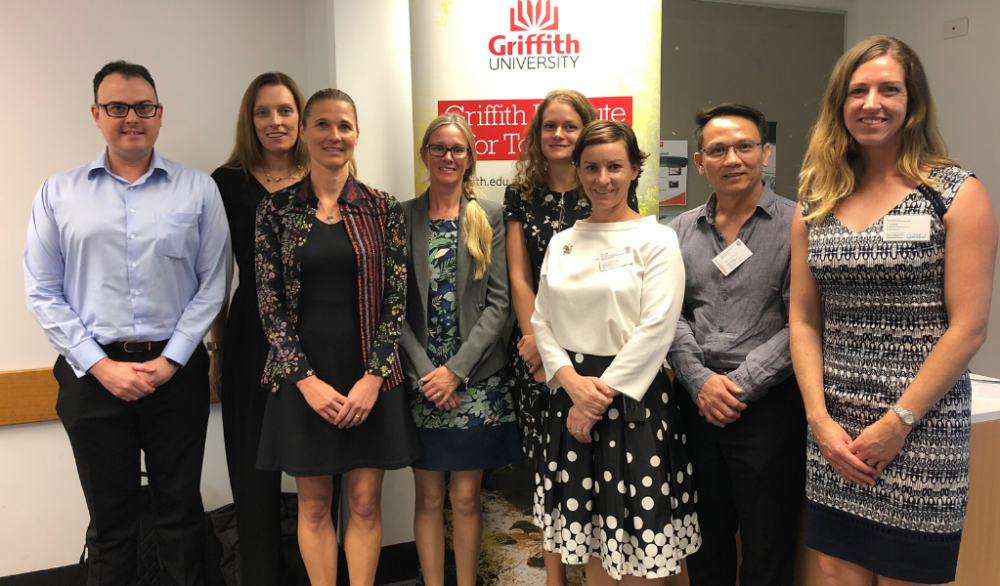The Griffith Institute for Tourism (GIFT), in collaboration with the Department of Innovation, Tourism Industry Development (DITID), hosted a joint seminar on Tourism for People, Planet and Profit.
The session showcased topical and timely tourism research and good practice being undertaken by GIFT, DITID, Tourism Events Queensland and Queensland Tourism Industry Council. The focus was on tourism, sustainability and climate change, and included practical information and ideas for stakeholders.
Jeff McAlister from DITID introduced the seminar by giving a big-picture overview of sustainable tourism development and climate change, including a brief introduction to initiatives currently being worked on by DITID to support sustainable tourism. Jeff believes there is true potential for Queensland to be a leader in this space.
On the day we heard from several speakers including Prof. Susanne Becken, A/Prof Tien Pham, Dr Emma Whittlesea, A/Prof Sarah Gardiner, Diana Mulholland, Dr Natasha Montesalvo, Jenny Collings and Jordan Watts.
A summary of each presentation is below.
Why is this important? Trends, tales, and traction – Prof. Susanne Becken (GIFT)
The first presentation was by Prof. Susanne Becken. Susanne started by touching on the current bush fire crisis happening across NSW and QLD right now. Susanne discussed what this first means for carbon emissions and the cost to the environment.
Susanne then went on to discuss the airline industry’s carbon emissions and the goal of meeting our target of 1.5 degrees warming or less. We are currently on track to hit 4-degree warming unless we make serious changes. If we don’t reduce our emissions, we have 8 years 2 months before we hit 1.5 degrees warming.
The image below shows the current trends.
Susanne’s speech really touched on the importance to reduce carbon emissions.
Susanne also discussed the importance of looking past profit and pricing tourism in terms of people and the planet.

The carbon footprint of tourism in Queensland – A/Prof Tien Pham and Prof. Susanne Becken (GIFT)
The second presentation looked at the carbon footprint of tourism in Queensland and how this is measured. A/Prof Tien Pham explained the methodology for measuring the carbon footprint for Queensland and the challenges involved when looking at both direct and indirect impacts and domestic and international visitors.
Tien mentioned that it is easier to track emissions for international tourists than domestic tourists. Typically, the process starts with looking at tourism expenditure. International tourists travelling to Australia typically have a high carbon footprint and this is because of the distance tourists must travel to get here and once here, the distance they must travel to get around the country. This can impact emissions significantly. Emissions also differ between regions.
Below is a summary of the carbon footprint of tourism in Queensland.
Summary of emissions in Queensland
Tourism emission by destinations in Queensland – 2016/17 – (per cent)

Shares of tourism emissions by spending items in Queensland total 2016/17 (per cent)

Our challenge moving forward is increasing revenue from tourism while reducing emissions.
Climate-Tourism Policy and Practice: global and local insights – Dr Emma Whittlesea (DES/GIFT)
Dr Emma Whittlesea from the Department of Environment and Science presented on the importance of policy and policy levers to drive change in tourism and related industries.
Climate change is a challenging and complex cross-cutting issue, and climate policy will not be sufficient unless it is integrated into other policy domains such as tourism.

This is not new for Queensland, who was leading the way on tourism-climate change programs in Australia ten years ago. Emma covered some examples of tourism-climate policy and practice, including the international level (WTTC) and the UK.
Emma shared the climate change policy response for Queensland that are publicly available online including:
In summary, we need to look at how we can integrate climate change policy objectives into tourism policy. We need tourism and climate change professionals to work together.
Consumer insights on global nature-based tourism experiences – Diana Mulholland (TEQ) / A/Prof Sarah Gardiner (GIFT)
A/Prof Sarah Gardiner and Diana Mulholland shared their research around nature-based tourism experiences.
GIFT researchers conducted a project to identify and analyse nature-based tourism experiences in competitor destinations.
Consumer sentiment analysis and three deep-dive case studies were conducted to look at nature-based tourism in different countries, including Botswana, Sri Lanka and Costa Rica.
The research highlighted how different cultures respond to different tourism activities and how this is important when crafting our marketing message. For example:
- Chinese visitors place importance on scenery, culture, and nature.
- German visitors were concerned with the time spent travelling and preferred adventurous and active activities.
- Indian tourists were interested in travelling to Bollywood film destinations.
- Japanese tourist were interested in nature, culture and private tours.
- New Zealand tourists put emphasis on the guide and looked for adrenaline-packed activities.
- United Kingdom tourists also placed importance on the guide and wildlife.
- US tourists were most concerned about the guide, visiting iconic landmarks and enjoying food in a natural setting.
The research found that each market is very different in what they look for when it comes to nature-based tourism. Therefore, we need to target marketing campaigns accordingly.
The overall insights and considerations are below.

Increasing industry preparedness – practical action and responses – Dr Natasha Montesalvo (QTIC)
The Tourism industry is prone to reputation damage after crises like cyclones, bush fires and shark attacks. Responding to these crises is very important to maintain tourism growth in the affected regions.
QTIC has learned that they need to be quick to respond to a crisis and through experience, they have learned the best way to respond. This is crucial because the faster the tourism industry recovers after a crisis, the faster communities recover.
Not only does QTIC need to be prepared and respond quickly, so do local businesses.
QTIC has a pool of resources including the CrisisReady App that guides businesses through what they need to do to prepare and respond to a crisis. This gives businesses a starting point.
Unfortunately, a crisis is inevitable. It’s not if it will happen, it’s when. When businesses are prepared, they can recover quicker and support their community.

The GBR Island Resort Rejuvenation Program – Jenny Collings / Jordan Watts (Tourism Division, DITID)
The final presentation by Jenny Collings and Jordan Watts explained DITID’s Great Barrier Reef Island Resort Rejuvenation Program.
25 million dollars is being spent in the Great Barrier Reef to help transform island resort destinations.
Several projects are currently underway to create completely sustainable, emission-free experiences in the Great Barrier Reef.
An aim is to green and clean the resorts through solar, energy efficiency and waste management strategies.
If you have any questions about this seminar or would like more information, please email [email protected]
